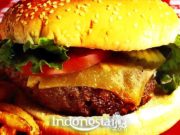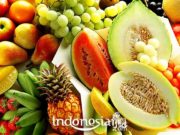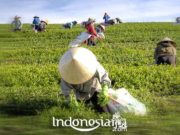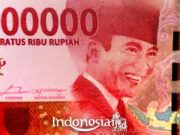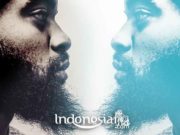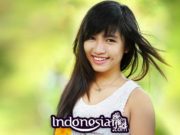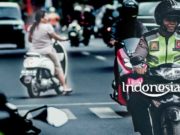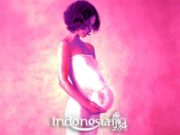Indonesia has a variety of traditional woven fabrics. One of the traditional woven fabrics is lurik. several villages in the Klaten area are known to manufacture Lurik woven fabrics. Among them are Pedan, Cawas, Juwiring, Bayat, Karangdowo, Tlingsing and Delanggu villages, now only Pedan and Tlingsing villages still exist.
With the emergence of “machine looms” (ATMs), traditional craftsmen with “gedogan” and “non-machine looms” (ATBM) began to recede. Both types of looms are operated manually, both made of wood and also of bamboo. The difference lies in the construction of the tool, the construction of “gedogan” is simpler than ATBM.
Villages in Klaten can still find traditional Lurik cloth and ATBM craftsmen. The largest number of manual weaving craftsmen are found in the village of Tlingsing which is popular as the “Weaving Tourism Village”.
In Pedan itself is known as the largest Lurik cloth center in Central Java. The manufacture of Lurik cloth here no longer relies on “gedogan” and ATBM. In line with the increasing market demand for Lurik, Lurik entrepreneurs in Pedan are using ATMs to produce modern Lurik fabrics.
With ATM, Lurik woven fabrics can be produced massively, with more varied patterns and colors. In terms of price, it is more affordable than traditional Lurik fabrics.
Both types of lurik have their own market, in terms of the price of lurik cloth from manual looms, which is much more expensive than Lurik ATM.
Lurik cloth itself was originally a typical male clothing in the Mataram Kingdom area. Made from coarse cotton and the price is affordable for the lower class. Usually used for the manufacture of “surjan” or typical men’s clothes in the Sultanate of Yogyakarta and “beskap” in the Kasunanan Surakarta area.
For women, the Lurik cloth is usually used for scarves. In the past, there were still sellers of herbal medicine carrying baskets of herbs with Lurik woven cloth.
Lurik is also made of a long shawl or “setagen” to tie a woman’s waist and stomach in Javanese tradition. Besides that, it is made as a subordinate cloth (bottom cover) or known as “jarik”.
Now its use is widespread in all circles, including for uniforms for company employees and civil servants. Given the high price of traditional Lurik woven fabrics, Lurik products on the market are generally the product of “machine looms”. The quality of the fabric produced by machines is also different from traditional Lurik fabrics.
The distinctive feature of the Lurik fabric is its motif or pattern, namely lines or squares. Quoted from the website www.kain-lurik.com, the word “lurik” comes from the Javanese language, namely “Lorek”. which symbolizes simplicity.
The meaning of “simple” is based on the page of the site, that is, simple in appearance and creation but a requirement of meaning.
According to the book “Lurik, Garis – Garis Bertuah” by Nian S. Djoemena (2000), not all fabrics with stripes or squares – city motifs can be called “Lurik”.
Nian said that a cloth is called “Lurik” if it meets certain requirements of yarn making (lawe), weaving, dyeing and finishing.
Lurik cloth in the past also functioned as an identity or symbol of social class, the average user of this cloth is the average person.
Not only that, it is also part of the attributes of traditional Javanese rituals, for example labuhan or other traditional ceremonies such as ruwatan, siraman, mitoni, and so on.
Following the development of fashion and clothing, Lurik adopts contemporary colors and their uses are endless. Lurik motifs are also used to add aesthetic elements to clothing or accents on vests, coats and other clothing.
In the Indonesian National Encyclopedia (1997), it is stated that the Lurik cloth is thought to have come from villages in Java. Like other folk traditions, this cloth also increases in degree when it is worn in the Keraton environment.
It is said that the age of the Lurik woven cloth is older than the batik cloth, depicted on the relief at Borobudur Temple depicting a figure weaving on a loom.
The traces of the iñi cloth tradition are also recorded in the oldest wayang story “Wayang Beber”, before there were shadow puppets. It is said that a knight proposes to a princess with a dowry of a loom.
Also recorded on the inscription of the Hindu Mataram Kingdom that lived in the 9th century AD. In the inscription it is recorded that there is a Lurik cloth with the motif of “Pakan Malang”. Meanwhile, the inscription of the Erlangga Dynasty era (1033 AD) is written with Lurik with the motif of “Tuluh Wantu”.
Currently Lurik cloth motifs are also very diverse in terms of color. Initially the motif was very, very simple, including the color of the fabric, namely black and white or a combination of the two colors.
Quoting from the kain-lurik.com page, in ancient times the process of making lurik weaving started from preparing the material, namely thread (lawe). This thread (lawe) comes from herbaceous plants with a predominantly black and white color.
Furthermore, the threads are colored using traditional dyes, namely Tarum) and from the bark of Mahogany.
The result of soaking the leaves of the Tom (Tarum) tree produces indigo, dark blue, and black colors, while the Mahogany bark produces a brown color.
Before weaving, the thread is washed repeatedly, then beaten until soft (squeezed), after that it is dried in the sun, then covered in rice using a brush made of coconut husk.
After this material or thread is stiff, then it is given a color. After that it is dried again and the thread is ready to be woven.
In the past, there were two kinds of tools used for weaving, namely the “bendho loom” and “the carrying loom”.
The “bendho” loom is made of bamboo or wooden sticks, usually used to make setagen. This loom is used in a standing position.
It is called the “bendho” loom because the tool used to tighten the weft is in the form of a “bendho” (machete).
Meanwhile, the carrying loom is used to make clothing, wide scarves, and “jarik” (long cloth). In the process of making the cloth, the weaver is seated holding the loom.
In Pedan village, they also produce woven fabrics ordered from various regions, including Toraja, and even woven fabrics typical of Mexico.
Some of the popular Lurik motifs can be purchased or ordered at the Lurik show room and workshop in this village. The motifs include Ketan Ireng, Ketan Salak, Kijing Miring, Sodo Sak Ler, Kembang Bayem, Kembang Sembukan, Rinding Putung, Dom Kecer (drizzling rain), Tumbar Pecah.
Various Lurik-inspired outfit products can also be purchased at various prices and types, including jackets, scarves, hats, shirts or Lurik accessories.
Not only that, some Lurik workshops also provide educational tours about Lurik, where visitors can see the manufacturing process and try it out. Come on, get other interesting information from Indonesiar.com.


